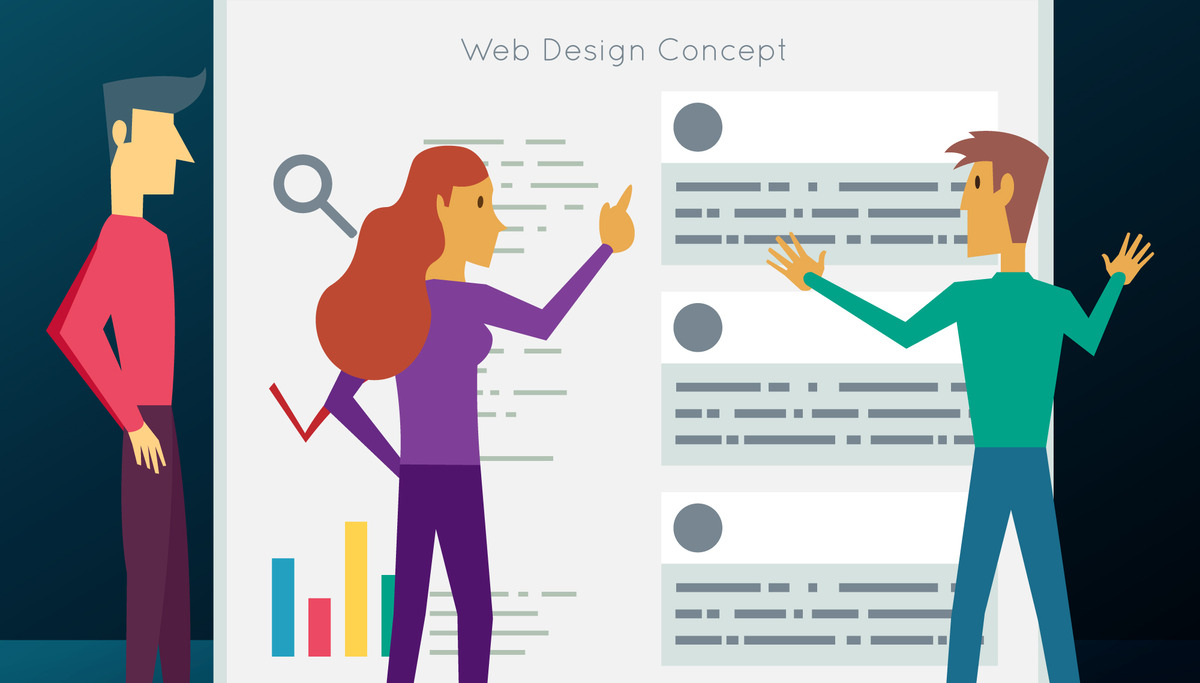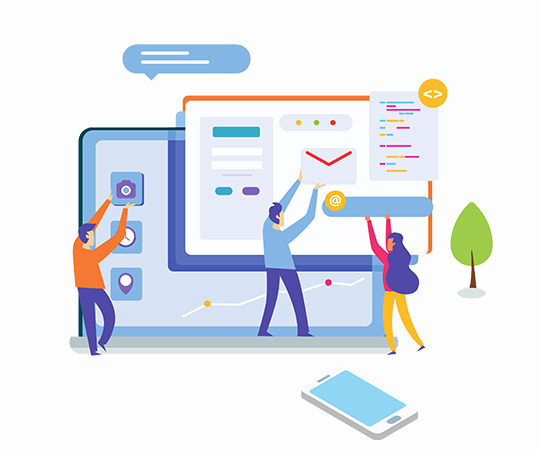Welcome to our blog post on the vital significance of user-centered design and the key goals for conducting foundational UX (User Experience) research. In today’s digital age, where technology seamlessly integrates into every aspect of our lives, creating intuitive and enjoyable user experiences has become paramount for businesses and organizations.
User-centered design places the user at the heart of the design process, ensuring that products and services meet their needs, preferences, and expectations.
This article will delve into the fundamental goals of foundational UX research, shedding light on the essential steps and methodologies that empower designers and developers to craft exceptional user experiences.
Whether you’re a seasoned UX professional or just starting your journey in this field, this post will provide valuable insights and actionable strategies to elevate your design approach to new heights.
Definition and Significance of User-Centered Design
User-centered design is an approach that prioritizes the needs, preferences, and expectations of users in the design and development process.
It recognizes that designing products and services solely based on technical capabilities or business goals may not result in optimal user experiences. Instead, user-centered design seeks to create intuitive and enjoyable experiences by deeply understanding the target users.
Foundational UX research plays a crucial role in this process, serving as the backbone for creating user-centered designs. It involves gathering insights about user needs, behaviors, and pain points to inform design decisions.
Goal 1: Understand User Needs and Behaviors
Empathy forms the foundation of UX research, as it enables designers to step into the users’ shoes and understand their perspectives, motivations, and challenges. By empathizing with users, designers can gain valuable insights into their needs, preferences, and goals.
Various methods are employed to gather user feedback and insights. These may include user interviews, surveys, focus groups, and observations.
These methods allow researchers to directly engage with users, collect their feedback, and uncover their underlying needs and expectations.
Analyzing user behaviors is a crucial goal of foundational UX research. By observing how users interact with existing products or services, researchers can identify pain points, areas of confusion, and opportunities for improvement.
Analyzing user behaviors provides valuable data for designing user-centered solutions.
Understanding user needs and behaviors forms the bedrock of user-centered design. By empathizing with users, gathering feedback, and analyzing behaviors, designers can gain deep insights that inform their design decisions. In the next part of this discussion, we will explore additional goals for foundational UX research, including defining clear design objectives and enhancing usability and accessibility.
Goal 2: Define Clear Design Objectives
User research findings serve as a valuable foundation for establishing clear design goals. By analyzing the data collected from user research, designers can identify patterns, preferences, and pain points that inform the design objectives.
These objectives should align with the needs and expectations of the target users to ensure the resulting design meets their requirements effectively.
Creating user personas and scenarios is an effective way to guide the design process. User personas are fictional representations of different user types, based on research data and demographics.
They encapsulate key characteristics, goals, behaviors, and preferences of the target users. By developing personas, designers can have a clear understanding of the diverse user groups they are designing for.
User scenarios, on the other hand, depict realistic situations in which users would interact with the product or service. These scenarios help designers envision how users would engage with the design, allowing them to identify pain points, opportunities, and potential design solutions.
Collaboration with stakeholders is essential to ensure alignment on design objectives. Stakeholders can include business owners, product managers, developers, and other team members involved in the design process.
By involving stakeholders in the decision-making process, designers can gather insights, address concerns, and ensure that design goals align with the overall vision and objectives of the project.
Collaborating with stakeholders also promotes a sense of ownership and shared understanding, leading to more effective design outcomes.
By defining clear design objectives based on user research findings, creating user personas and scenarios, and collaborating with stakeholders, designers can establish a solid foundation for their user-centered design process. The next section will explore another crucial goal of foundational UX research: enhancing usability and accessibility.
Goal 3: Enhance Usability and Accessibility
Usability testing is a crucial method for evaluating the effectiveness of design solutions. It involves observing users as they interact with prototypes or existing products/services to identify usability issues, navigation challenges, and areas of improvement.
Usability testing provides valuable feedback that can inform iterative design iterations, ensuring that the final design is intuitive, efficient, and user-friendly.
Incorporating accessibility considerations is essential for creating inclusive user experiences. Designers should strive to make their products and services accessible to users with disabilities or diverse needs.
This involves following accessibility guidelines and standards, such as providing alternative text for images, ensuring proper color contrast, and designing with assistive technologies in mind. By prioritizing accessibility, designers can ensure that their designs can be accessed and used by a wide range of users.
An iterative design process is crucial for continuous improvement. By gathering user feedback, analyzing data, and implementing changes, designers can refine their designs over time.
Iterative design allows for incremental enhancements, addressing user needs and preferences in a systematic and evolving manner. This approach fosters a user-centered mindset, ensuring that the design is continually optimized based on user insights.
Read More: The impact of color in mobile app design
Goal 4: Foster User Engagement and Satisfaction
Creating engaging and delightful experiences is essential to captivate users. Designers should strive to go beyond functionality and incorporate elements that evoke positive emotions, such as visual aesthetics, interactive elements, and personalized experiences.
By designing for engagement, designers can enhance user satisfaction and build long-lasting connections between users and the product or service.
Implementing user feedback loops is crucial for ongoing refinement. By actively seeking and incorporating user feedback throughout the design process, designers can identify areas of improvement and make necessary adjustments.
User feedback can come from various sources, including surveys, usability testing, user interviews, and analytics. By listening to users’ voices, designers can continuously refine their designs to better align with user expectations.
Measuring user satisfaction is vital to gauge the effectiveness of the design. Surveys and user testing can be conducted to assess user satisfaction levels, gather feedback on specific aspects of the design, and identify areas that require further improvement.
By measuring user satisfaction, designers can gain insights into the success of their user-centered design approach and make data-driven decisions for future enhancements.
By focusing on enhancing usability and accessibility, as well as fostering user engagement and satisfaction, designers can create impactful user experiences that not only meet user needs but also exceed their expectations. In the concluding section, we will summarize the key goals of foundational UX research and emphasize the impact of user-centered design on business success.
Conclusion
Foundational UX research encompasses several key goals that are vital for the success of user-centered design. These goals include understanding user needs and behaviors, defining clear design objectives, enhancing usability and accessibility, and fostering user engagement and satisfaction. By prioritizing these goals, designers can create meaningful and effective user experiences that align with user expectations.
User-centered design has a profound impact on business success. By placing users at the center of the design process, businesses can gain a competitive edge by creating products and services that resonate with their target audience.
User-centered design leads to increased customer satisfaction, improved user loyalty, and positive brand perception. It also reduces the risk of costly design mistakes and rework, as the design decisions are based on user insights and feedback.
Implementing user-centered design principles should be encouraged in future projects. By integrating user-centered design methodologies from the early stages of product development, businesses can save time and resources by avoiding costly redesigns and rework.
Furthermore, the benefits of creating exceptional user experiences extend beyond immediate project success. Satisfied users are more likely to become loyal customers, refer others to the product or service, and provide valuable feedback for continuous improvement.
In conclusion, foundational UX research plays a pivotal role in achieving user-centered design. By understanding user needs, setting clear design objectives, enhancing usability and accessibility, and prioritizing user engagement and satisfaction, designers can create exceptional user experiences that drive business success. By embracing user-centered design principles in future projects, businesses can create products and services that truly resonate with their target audience, resulting in long-term customer loyalty and sustainable growth.




